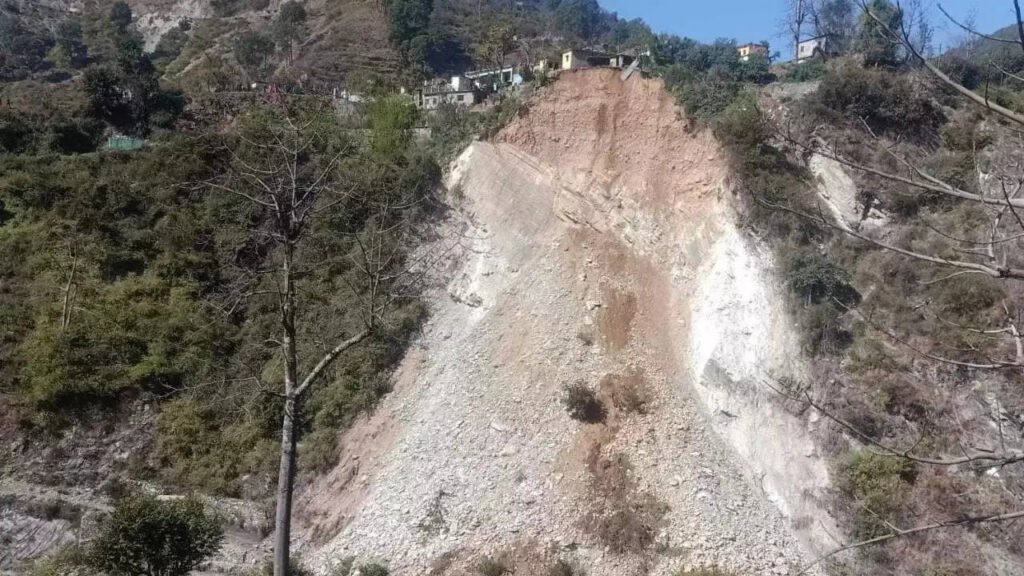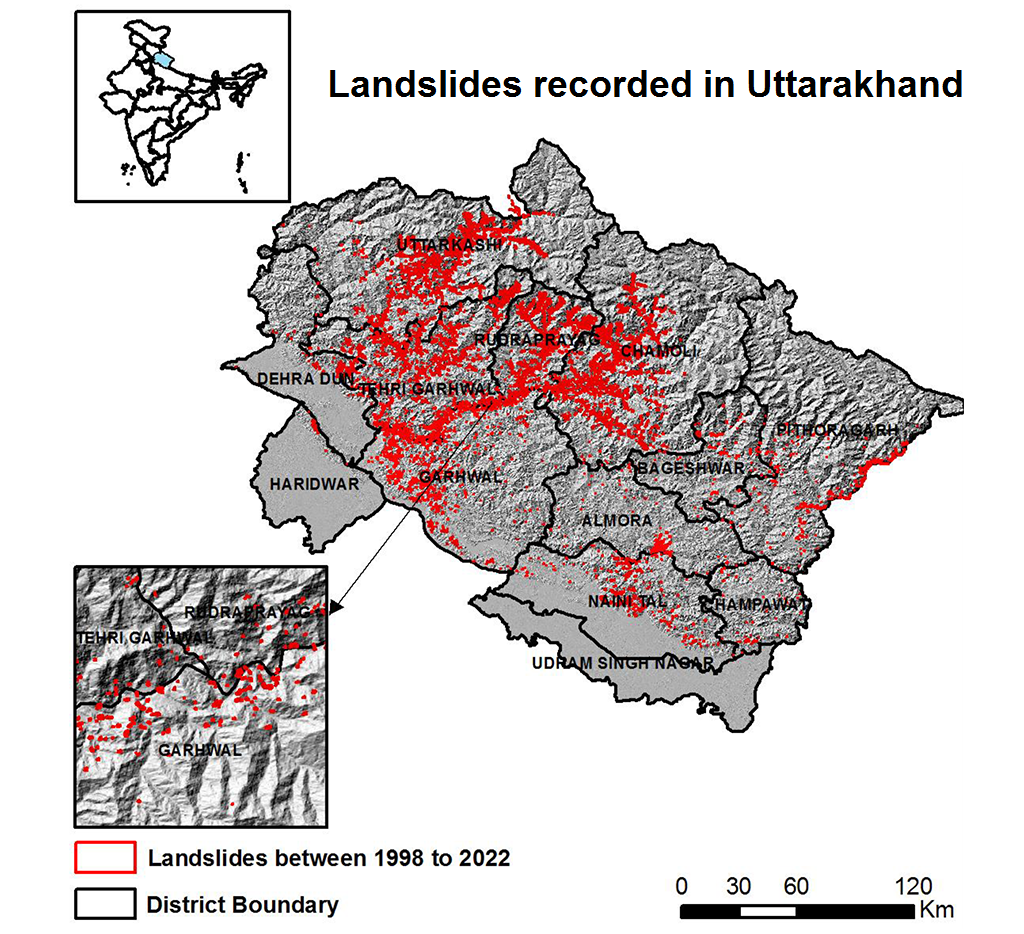Uttarakhand landslide index : Uttarakhand’s Rudraprayag, Tehri Top the List, says ISRO Report
According to a recent report released by the Indian Space Research Organisation (ISRO), Rudraprayag and Tehri in Uttarakhand have topped the list of landslide-prone areas in India. The report provides the landslide susceptibility index (LSI) of different districts in India, which is calculated using factors such as slope, geology, and land use.

Why this News is Important
For students preparing for government exams, this news is crucial as it highlights the need to develop appropriate measures to prevent landslides and mitigate their effects. Additionally, it also emphasizes the importance of disaster management and preparedness in areas prone to landslides.
Impact on People’s Lives and Infrastructure
Landslides can cause significant damage to life and property. With the onset of monsoon season, the risk of landslides increases, leading to loss of lives and damage to infrastructure. In addition, landslides can also disrupt transportation and communication networks, hindering rescue and relief operations.
Significance for Uttarakhand
Uttarakhand, being a hilly state, is highly prone to landslides. The state has witnessed several landslides in the past, including the devastating flash floods in 2013 that killed thousands of people and caused widespread destruction. The ISRO report is a reminder of the state’s vulnerability to natural disasters and the need to take preventive measures.
Historical Context
Uttarakhand has a long history of landslides, which have caused significant damage to life and property over the years. The state’s rugged terrain, coupled with high rainfall, makes it highly prone to landslides. In June 2013, the state witnessed one of the worst natural disasters in recent history when flash floods caused by landslides killed over 5,000 people and caused widespread destruction.
Key Takeaways from “Landslide Index: Uttarakhand’s Rudraprayag, Tehri Top the List, says ISRO Report”
| Serial Number | Key Takeaway |
|---|---|
| 1. | Rudraprayag and Tehri in Uttarakhand are the most landslide-prone areas in India. |
| 2. | Landslides can cause significant damage to life and property, disrupting transportation and communication networks. |
| 3. | Uttarakhand has a long history of landslides, with the 2013 flash floods being one of the worst natural disasters in recent history. |
| 4. | The ISRO report highlights the need to develop appropriate measures to prevent landslides and mitigate their effects. |
| 5. | Disaster management and preparedness are crucial in areas prone to landslides. |
In conclusion, the ISRO report serves as a wake-up call for the government and the people of Uttarakhand to take preventive measures to tackle the issue of landslides. Students preparing for government exams should pay attention to this news and understand the importance of disaster management and preparedness in areas prone to natural disasters.
Important FAQs for Students from this News
Q. What is landslide susceptibility index (LSI)?
A. The landslide susceptibility index (LSI) is a measure of the likelihood of landslides occurring in a particular area. It is calculated using factors such as slope, geology, and land use.
Q. Which districts in India are the most landslide-prone, according to the ISRO report?
A. According to the ISRO report, Rudraprayag and Tehri in Uttarakhand are the most landslide-prone areas in India.
Q. What is the historical context of landslides in Uttarakhand?
A. Uttarakhand has a long history of landslides, which have caused significant damage to life and property over the years. The state’s rugged terrain, coupled with high rainfall, makes it highly prone to landslides.
Q. What is the significance of the ISRO report for Uttarakhand?
A. The ISRO report is significant for Uttarakhand as it highlights the need for the state to take preventive measures to tackle the issue of landslides. The state has witnessed several landslides in the past, including the devastating flash floods in 2013 that killed thousands of people and caused widespread destruction.
Q. What should be the focus of disaster management and preparedness in areas prone to landslides?
A. Disaster management and preparedness should focus on preventing landslides and mitigating their effects. This can include measures such as building retaining walls, stabilizing slopes, and improving drainage systems.
Some Important Current Affairs Links
















